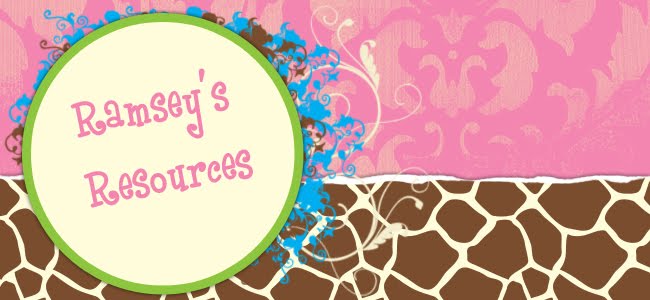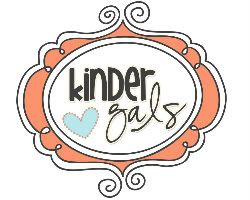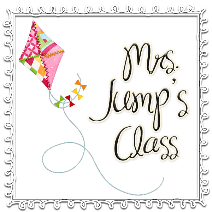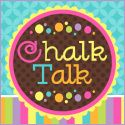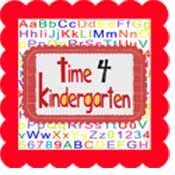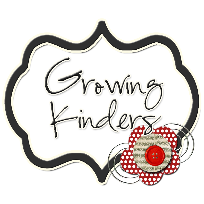Oklahoma does not have any common core standards and With the new focus on common core I have been doing some research on other states that have common core for Pre-k. My team of other pre-k teachers and I have decided we are going to use the New York Pre-K common core standards to drive our instruction.
Mathematics Pre-Kindergarten
Counting and Cardinality
PK.CC
Know number names and
the count sequence.
1. Count to 20.
2. Represent a number of objects with a written numeral 0–5 (with 0
representing a count of no objects).
Count to tell the
number of objects.
3. Understand the relationship between numbers and quantities to 10;
connect counting to cardinality.
a. When counting objects, say the number names
in the standard order, pairing each object with one and only one number name
and each number name with one and only one object.
b. Understand that the last number name said
tells the number of objects counted. The number of objects is the same
regardless of their arrangement or the order in which they were counted.
c. Understand
that each successive number name refers to a quantity that is one larger.
1. Count to answer “how many?” questions about as many as 10 things
arranged in a line, a rectangular array, or a circle, or as many as 5 things in
a scattered configuration; given a number from 1–10, count out that many
objects.
Compare numbers.
1. Identify whether the number of objects in one group is more, less,
greater than, fewer, and/or equal to the number of objects in another group,
e.g., by using matching and counting strategies.1 (1: up to 5 objects)
2. Identify “first” and “last” related to order or position.
Operations and Algebraic
Thinking PK.OA
Understand addition
as adding to, and understand subtraction as taking from.
1. Demonstrate an understanding of addition and subtraction by using
objects, fingers, and responding to practical situations (e.g., If we have 3
apples and add two more, how many apples do we have all together?).
Understand simple
patterns.
1. Duplicate and extend (eg., What comes next?) simple patterns using
concrete objects.
Measurement and Data
PK.MD
Describe and compare
measurable attributes.
1. Identify measurable attributes of objects, such as length, and
weight. Describe them using correct vocabulary (e.g., small, big, short, tall,
empty, full, heavy, and light).
Sort objects and
count the number of objects in each category.
1. Sort objects into categories; count the numbers of objects in each
category. 1 (limit category counts to be less than or equal to 10)
Geometry PK.G
Identify and describe
shapes (squares, circles, triangles, rectangles).
1. Describe objects in the environment using names of shapes, and
describe the relative positions of these objects using terms such as top,
bottom, up, down, in front of, behind, over, under, and next to.
2. Correctly name shapes regardless of size.
Analyze, compare, and
sort objects.
1.
Analyze,
compare, and sort two- and three-dimensional shapes and objects, in different
sizes, using informal language to describe their similarities, differences, and
other attributes (e.g., color, size, and shape).
2.
Create
and build shapes from components (e.g., sticks and clay balls).
Reading
Standards for Literature: RL
Prekindergarteners:
Key Ideas and Details
1. With prompting and support, ask and answer about
detail(s) in a text.
2. With prompting and support, retell familiar stories.
3. With prompting and support, ask and answer questions
about characters and major events in a story.
Craft and Structure
4. Exhibit curiosity and interest in learning new
vocabulary (e.g., ask questions about unfamiliar vocabulary).
5. Students interact with a variety of common types of
texts (e.g., storybooks, poems, songs).
6. With prompting and support, can describe the role of
an author and illustrator.
Integration and Knowledge of Ideas
7. With prompting and support, students will engage in a
picture walk to make connections between self, illustrations, and the story.
8. Not applicable to literature
9. With prompting and support, students will compare and
contrast two stories relating to the same topic ( Mercer Meyer series)
a. With prompting and support, students will make
cultural connections to text and self.
Research to Build and Present Knowledge
10. Actively
engage in group reading activities with purpose and understanding.
Responding to Literature
11. With prompting and support, make connections between self,
text, and the world around them (text, media, social interaction).
Reading
Standards for Informational Text: RI
Prekindergarteners:
Key Ideas and Details
1. With prompting and support, ask and answer questions
about details in a text.
2. With prompting and support, retell detail(s) in a
text.
3. With prompting and support, describe the connection
between two events or pieces of information in a text.
Craft and Structure
4. Exhibit curiosity and interest in learning new
vocabulary (e.g., ask questions about unfamiliar vocabulary).
5. Identify the front cover, back cover; displays correct
orientation of book, page turning skills.
6. With prompting and support, can describe the role of
an author and illustrator.
Integration and Knowledge of Ideas
7. With prompting and support, describe the relationship
between illustrations and the text in which they appear (e.g. what person,
place, thing or idea in the text an illustration
depicts).
8. Not applicable to prekindergarten.
9. With prompting and support, identify basic
similarities and differences between two texts on the same topic (e.g.
illustrations,
descriptions or procedures).
Range of Reading and Level of Text Complexity
10. With prompting and support, actively engage in group reading
activities with purpose and understanding.
Reading
Standards Foundational Skills: RF
Prekindergarteners:
Print Concepts
1. Demonstrate understanding of the organization and basic
features of print.
a. Follow words from left to right, top to bottom, and
page by page.
b. Recognize that spoken words are represented in written
language by specific sequences of letters.
c. Understand that words are separated by spaces in
print.
d. Recognize and name some upper /lowercase letters of
the alphabet, especially those in own name.
e. Recognize that letters are grouped to form words.
f. Differentiate letters from numerals.
Phonological Awareness
2. Demonstrate an emerging understanding of spoken words,
syllables and sounds (phonemes).
a. Engage in language play (e.g. alliterative language,
rhyming, sound patterns).
b. Recognize and match words that rhyme.
c. Demonstrate awareness of relationship between sounds
and letters.
d. With support and prompting, isolate and pronounce the
initial sounds in words.
Phonics and Word Recognition
3. Demonstrate emergent phonics and word analysis skills.
a. With prompting and support, demonstrate one-to-one
letter-sound correspondence by producing the primary sound of some consonants.
b. Recognizes own name and common signs and labels in the
environment.
Fluency
4. Displays emergent reading behaviors with purpose and
understanding (e.g., pretend reading).
Writing
Standards: W
Prekindergarteners:
Text Types and Purposes
1. With prompting and support, use a combination of
drawing, dictating, or writing to express an opinion about a book or topic
(e.g., I like…. because…)
2. With prompting and support, use a combination of
drawing, dictating, or writing to compose informative/explanatory texts in
which they name what they are writing about and supply some information about
the topic.
3. With prompting and support, use a combination of
drawing, dictating, or writing to narrate a single event and provide a reaction
to what happened.
Production and Distribution of Writing
4. Not applicable to prekindergarten (begins in grade 3).
5. With guidance and support, respond to questions and
suggestions and add details to strengthen illustration or writing, as needed.
6. With guidance and support, explore a variety of
digital tools to produce and publish writing; collaborate with peers.
Research to Build and Present Knowledge
7. With guidance and support, participate in shared
research and writing projects (e.g., explore a number of books by a favorite
author and express opinions about them).
8. With guidance and support, recall information from
experiences or gather information from provided sources to answer a question.
9. Not applicable to prekindergarten (begins in grade 4).
Range of Writing
10. Not applicable to prekindergarten (begins in grade
3).
Responding to Literature
11. Create and present a poem, dramatization, art work,
or personal response to a particular author or theme studied in class, with prompting
and support as needed.
Speaking
and Listening Standards: SL
Prekindergarteners:
Comprehension and Collaboration
1. With guidance and support, participate in
collaborative conversations with diverse partners about pre- kindergarten topics and
texts with peers
and adults in small and large groups.
a. Engage in agreed-upon rules for discussions (e.g.,
listening to others and taking turns speaking about the topics and texts under discussion).
b. Engage in extended conversations.
c. Communicate with individuals from different cultural
backgrounds.
2. With guidance and support, confirm understanding of a
text read aloud or information presented orally or through other media by asking
and answering questions about key details and requesting clarification if
something is not understood.
3. With guidance and support, ask and answer questions in
order to seek help, get information, or clarify something that is not understood.
Presentation of Knowledge and Ideas
4. Describe familiar people, places, things, and events
and, with prompting and support, provide additional detail.
5. Add drawings or other visual displays to descriptions
as desired to provide additional detail.
6. Demonstrate an emergent ability to express thoughts, feelings
and ideas.
Language
Standards: L
Prekindergarteners:
Conventions of Standard English
1. Demonstrate command of the conventions of standard
English grammar and usage when writing or speaking.
a. Print some upper- and lowercase letters.(e.g. letters
in their name).
b. Use frequently occurring nouns and verbs (orally).
c. With guidance and support, form regular plural nouns
orally by adding /s/ or /es/ (e.g., dog, dogs; wish, wishes) (orally).
d. Understand and use question words (interrogatives)
(e.g., who, what, where, when, why, how).
e. In speech, use the most frequently occurring
prepositions (e.g., to, from, in, out, on, off, for, of, by, with).
f. With guidance and support, produce and expand complete
sentences in shared language activities.
2. Demonstrate command of the conventions of standard
English grammar and usage when writing or speaking.
a. Capitalize the first letter in their name.
b. Attempt to write a letter or letters to represent a
word.
c. With guidance and support, attempt to spell simple
words phonetically, drawing on knowledge of sound-letter relationships. Knowledge
of Language
3. Use knowledge of language and how language functions
in different contexts Vocabulary Acquisition and Use
4. Determine or clarify the meaning of unknown and
multiple-meaning words and phrases based on pre-kindergarten reading and content.
a. Identify new meanings for familiar words and apply
them accurately (e.g., knowing duck is
a bird and learning the verb to duck).
5. With guidance and support, explore word relationships
and nuances in word meanings.
a. Sort common objects into categories (e.g., shapes,
foods) for understanding of the concepts the categories represent.
b. Demonstrate understanding of frequently occurring
verbs and adjectives by relating them to their opposites ( e.g., up, down,
stop, go, in, out).
c. Identify real-life connections between words and their
use (e.g., note places at school that are colorful).
d. Distinguish shades of meaning among verbs describing
the same general action (e.g., walk, march, strut, prance) by acting out the meanings.
6. With prompting and support, use words and phrases acquired through conversations,
reading and being read to, and responding to
